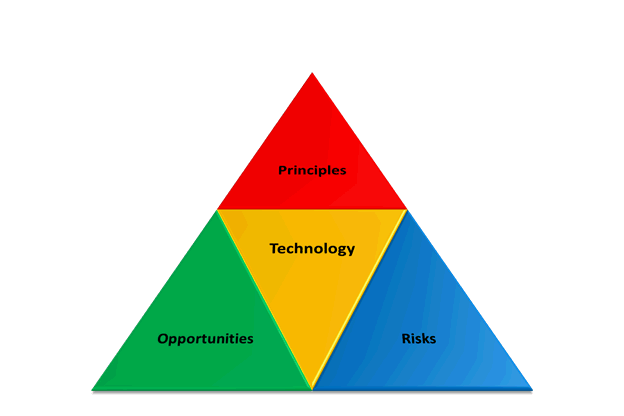The Yin and Yang of Shadow IT (Master Slide Deck v26, slide 115, 167)
- On the one hand “Shadow IT is considered by many an important source for innovation and such systems may turn out to be prototypes for future approved IT solutions” and
- On the other hand “... Shadow IT solutions are not often in line with the organization's requirements for control, documentation, security, reliability, etc.” --Wikipedia entry on “Shadow IT” [2]
Shadow IT can mean duplicate costs and efforts.

Note the Opportunities and Risks
What to do to turn Shadow IT into Impact IT? (Slide 139)
- Consult with ISD
- We want to build bridges, not obstacles
- Learn from SaaS software models
- Consult with ITSG (the IFRC governance arm)
- For projects over 50K (cumulative), see the TOR
- Use the Project Methodology developed with Accenture
- Route consulting projects with IT components to ISD for review (an HR, Legal ask)
- Use the Technology Catalogue (ask who has already done something like I want to do?)
- Use commercial off-the-shelf (COTS) solutions
- Avoid large custom projects with high TCO
Let’s turn the motorcycles and taxis of today into buses and trucks of tomorrow
UMSI slides:
- From shadow IT to feeder IT
IT Strategy slides:
- Shadow IT (outside SC-IT purview) accounts for over 50% of IFRC IT spending
- “Dark side” of shadow IT is divergent data and technology
- Innovation and Local “Shadow” IT initiatives (“One IT” is not about eliminating these experiments, but coordinating them and avoiding redundancy and location-specific IT.)
From Think Paper 11 - Yin and Yang of Shadow Work
What is the challenge?
The challenge is how to balance the need for local decision-making with the need for shared standards and knowledge, working in a common direction as one IFRC.
Any Positives to Shadow Work (pro’s)?
1. Local creativity
2. Business knowledge
3. Field-tested processes and applications
4. Closer-to-the-beneficiary
Negatives (con’s)?
1. Higher costs
2. Redundant and incompatible work
3. Divergent standards, data, technology
4. Lacks knowledge of subject matter experts
Pent up demand will generate shadow IT – and risk the of divergence of technologies
We need to work together to ensure convergence |